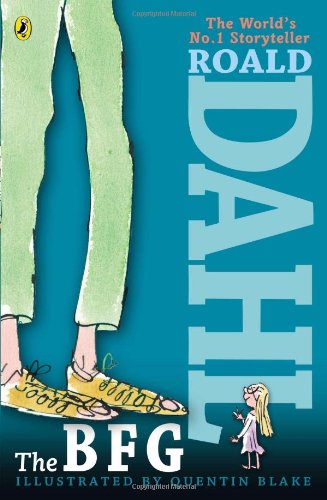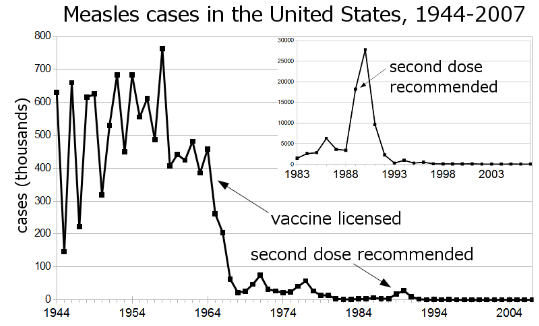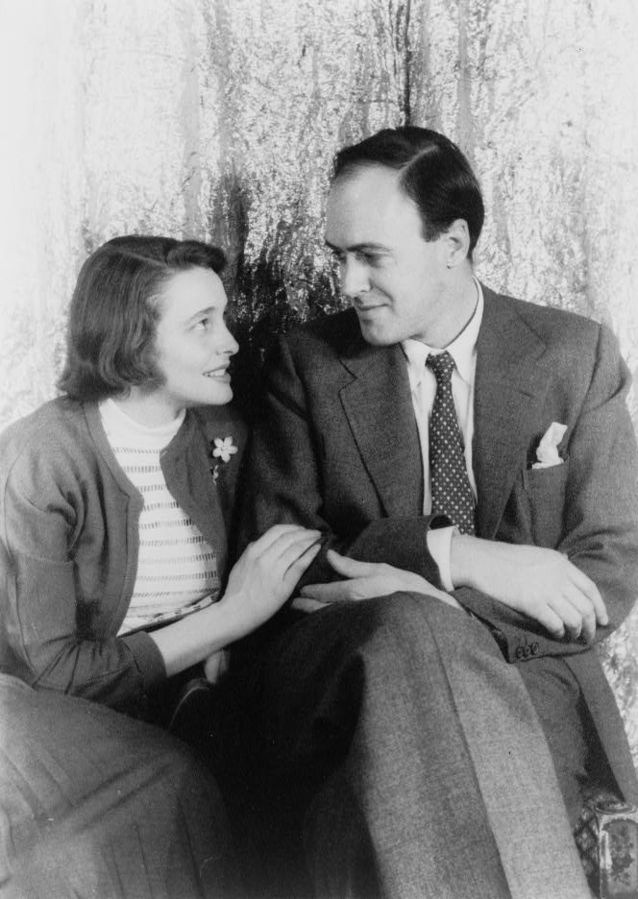“I has told you five or six times,” he said, “and the third will be the last.”
The BFG, from Roald Dahl’s book of the same name
The recent outbreak of measles—once eradicated in the United States—is a cause of deep concern and frustration to anyone who trusts the process by which scientific experts reach a consensus on complicated issues. Scientists (and those of us who agree with them) passionately want everyone to understand how they reached their conclusions, and how solid and credible those conclusions are. It is, however, well known that the answer to “I don’t trust science” is not “let me tell you some more science.” So what’s a science-loving scientist to do? Well, one answer is: tell a story.

When my kids were little, I loved reading to them. Of all the books we read together, my very, very favorite remains The BFG by Roald Dahl. Not as well-known as Charlie and the Chocolate Factory or Matilda, The BFG is the tale of an unlikely friendship between an eight-year-old orphan girl named Sophie, and a “nice and jumbly” giant who calls himself “The Big Friendly Giant" (or BFG for short) to distinguish himself from the other Giants, who go “zipfizzing off” from Giant country every night to “guzzle human beans.”
OK, so it might be a little grizzly for some parents’ taste, but my children loved the word play, the suspense, and the whizbang ending where Sophie, the BFG, and the Queen of England…well, I won’t ruin it for you, but trust me, it’s a winksquiffler.
Loving the book so much, I was deeply touched when I learned recently that Dahl lost a seven-year old daughter, Olivia, to the measles in 1962. The BFG, published in 1982, is dedicated to Olivia. In an open letter written in 1986, Dahl tells the story of his daughter’s heartbreakingly rapid and unexpected death from one of measles’ rare complications—encephalitis—and pleads with parents to vaccinate their children, an option that was not available to Dahl (the first measles vaccine was not widely available until 1963). It is tragic that Dahl’s letter, which encouraged parents to overcome their fears, has once again become relevant.
Ironically, in his letter, Dahl held up America as a model to his fellow Britons, noting that “in America, where measles immunisation is compulsory, measles, like smallpox, has been virtually wiped out.”

Indeed, as detailed in a 2004 article, "Measles Elimination in the United States", between 1982 and 1988, measles incidence in the U.S. dropped to 1.3 cases per 100,000 population—down from over 300 cases per 100,000 during 1956–1960. A resurgence in 1989–1991 was met with a redoubled effort to extend the reach of vaccination, including increasing the recommended number of doses of vaccine and beginning the vaccination series before the age of two years. The intensified efforts succeeded in reducing the incidence of measles by another order of magnitude to <1 case per one million population. From 1997 on, measles was considered eliminated in the United States, an achievement that gave considerable encouragement to international measles control programs.
Thus it would be deeply distressing to Dahl (were he alive; he passed away in 1990) that unfounded fear—combined with increased recourse to a large loophole in the regulations that aim to make vaccination compulsory—has allowed measles to return. Parental worries about vaccine safety, though arising from genuine love and concern for their children, are utterly unsupported by the evidence. So many parents have lately chosen to give in to these unfounded fears that almost 700 children in the U.S. contracted measles in 2014, and already there have been over 120 cases in 2015. Thank goodness, death from the disease is quite rare (about one in a thousand cases), but it is only a matter of time before another American mother and father could be writing a letter like Dahl’s. Indeed, about 145,000 families worldwide mourned the death of a child from measles in 2014.
The greatest risk involved in the measles vaccine is a severe allergic reaction, which occurs in less than 1 out of a million doses. So how do we convince parents that the risk from measles (1–2 deaths per 1000 cases) more than justifies the “risk” of vaccination? The torrent of studies show that the MMR (measles-mumps-rubella) vaccine is safe and that autism is just as common among the unvaccinated as the vaccinated. But these facts are of limited use in persuading some parents to vaccinate their children. Indeed, a recent study (behind a pay wall, but results discussed here) showed that exposing parents to more scientific data just reinforces their fears. So how do we persuade parents to do the right thing?
Well, if people are afraid—and it is fear that underlies the refusal to vaccinate—they don’t need to be badgered or sneered at, they need to be reassured. And that reassurance comes best from someone they trust. Or preferably from lots of someones they trust. If not Roald Dahl, perhaps a neighbor, co-worker, or friend—especially an older person who might remember what it was like before vaccines.
No doubt pediatricians will be the front line in efforts to return the vaccination rate to the levels that kept the U.S. free of measles for almost 30 years. Vaccination requirements are set at the state level. States tend to follow the recommendations of the national Center for Disease Control and Prevention, requiring a full set of vaccinations before entry into public school. Many states, however, allow parents to claim a “personal belief” exemption with little or no justification. Some of these states, like California, are wisely considering tightening up the process for granting such exemptions, and requiring a pediatrician to certify that there is a valid medical reason for declining or delaying vaccination. The process of requesting an exemption will give pediatricians an opportunity to allay parents’ fears.
As I re-read The BFG recently, with Dahl’s terrible loss in mind, it wasn’t hard to recognize the “cannybully and murderful” giants as metaphors for childhood diseases—galloping around the world and devouring children night after night. By the end of the book, Sophie and the BFG’s clever and courageous plan has resulted in the giants’ capture and imprisonment in a deep pit, where they are condemned to dine no longer on children but on the disgusterous and foulsome snozzcumber. Just what they deserve.

Dahl exhorted parents to do the right thing and keep the giants safely at bay almost 30 years ago. I will give him the last words, from his 1986 letter:
“Incidentally, I dedicated two of my books to Olivia, the first was James and the Giant Peach. That was when she was still alive. The second was The BFG, dedicated to her memory after she had died from measles. You will see her name at the beginning of each of these books. And I know how happy she would be if only she could know that her death had helped to save a good deal of illness and death among other children.”

